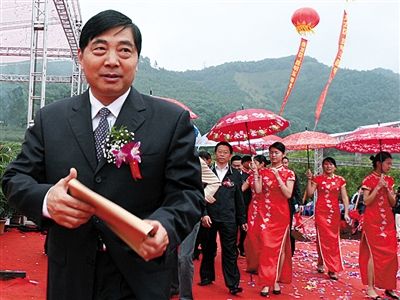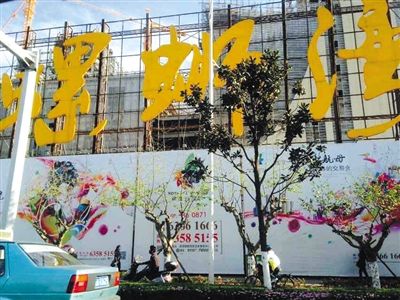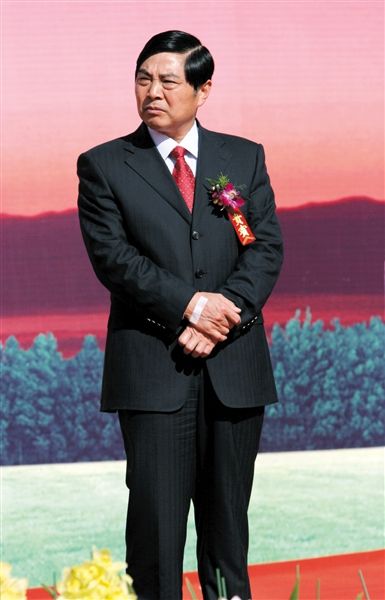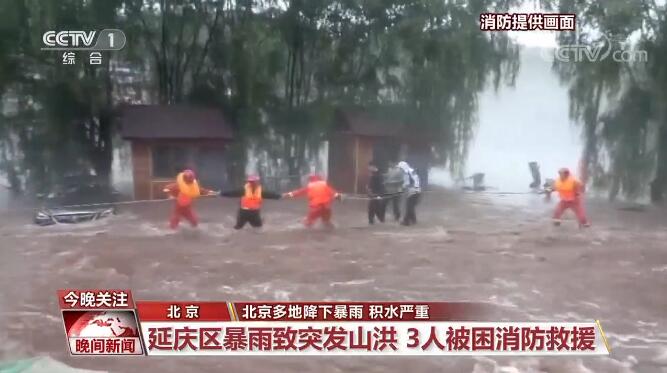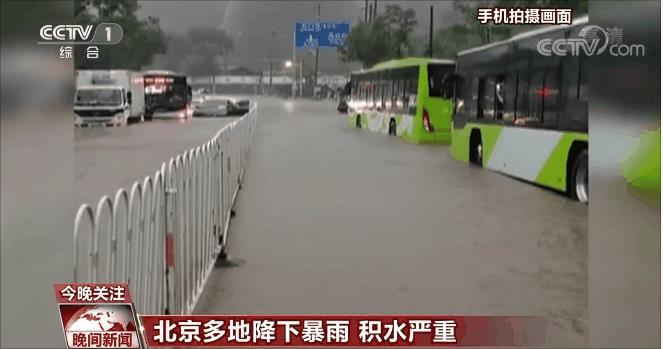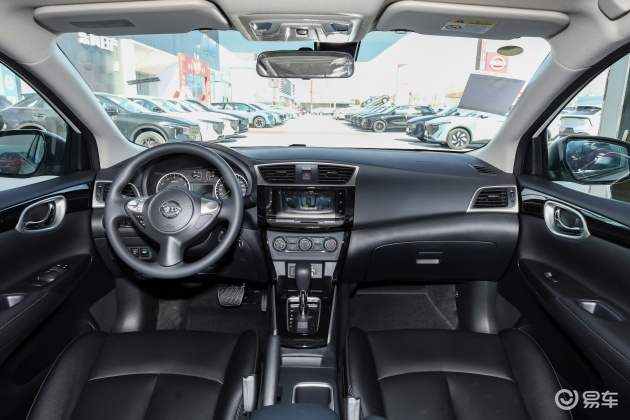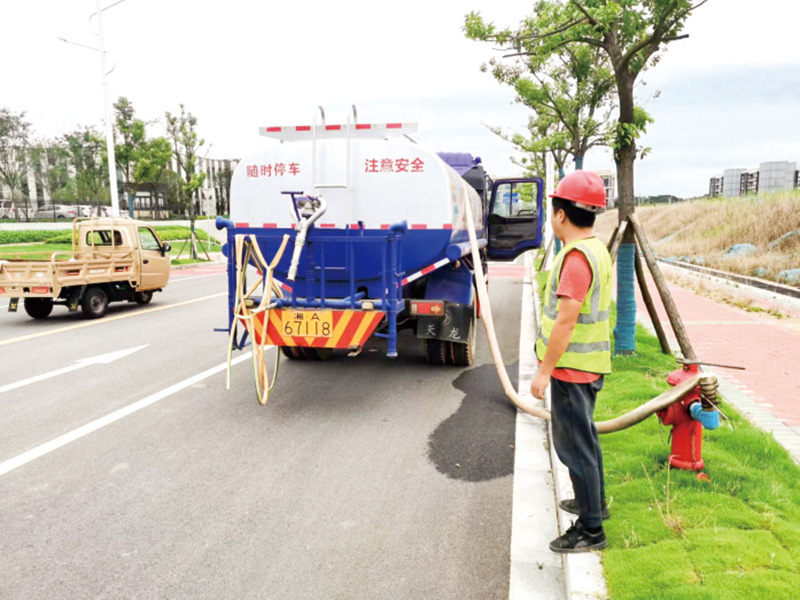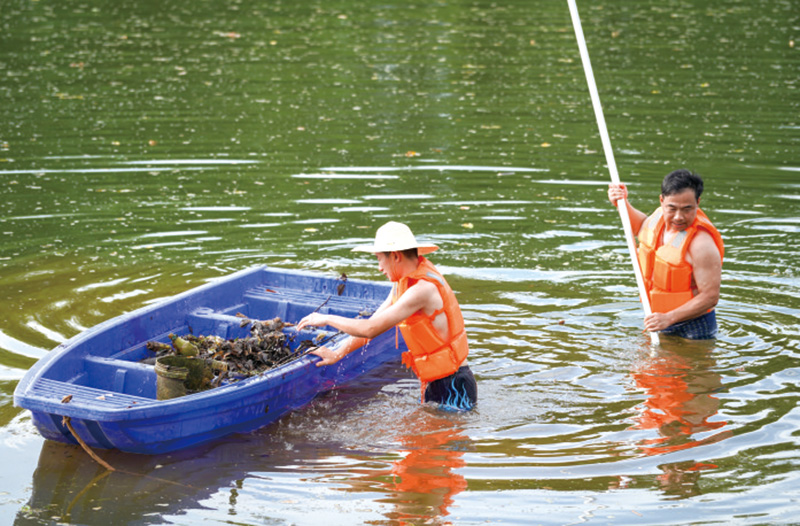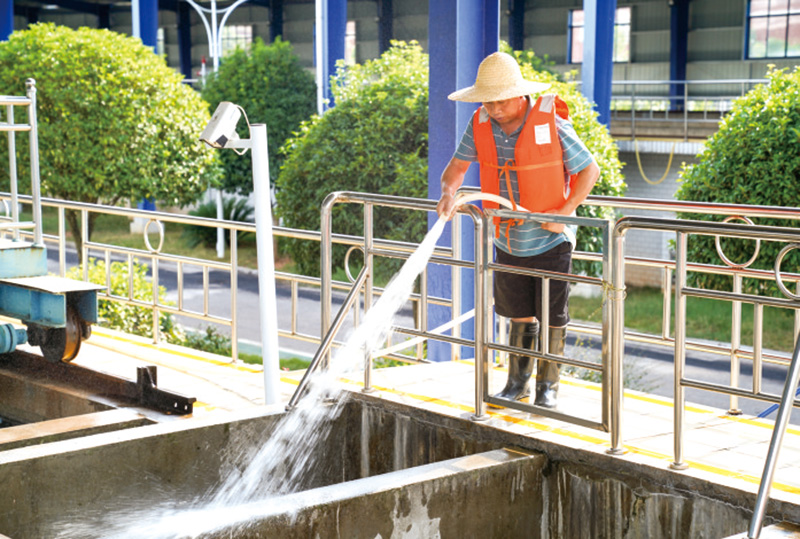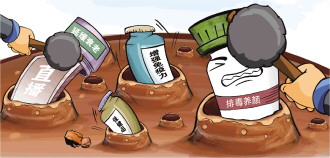
● Exaggerating and deifying the efficacy of ordinary products makes the audience mistakenly think that there are not a few live broadcasts of health care products, and some anchors imply that they have therapeutic effects when promoting health food. Some buyers listened to the anchor’s propaganda. After buying it back, they found that it was not only ineffective, but also delayed the treatment time.
● Anchors who have obtained corresponding qualifications should introduce health care products in a true and accurate way, and should not publicize the contents containing assertions or guarantees indicating efficacy and safety, contents involving disease prevention and treatment functions, or compare with drugs or other health care foods. In addition, it should be suggested that health food can not replace drug treatment.
● For businesses selling health care products, the platform should strictly review whether they have corresponding qualifications. If false and exaggerated propaganda behaviors are found, measures such as stopping broadcasting and taking off the shelves should be taken in time; Regulatory authorities need to strengthen daily supervision, severely investigate and deal with illegal and illegal issues such as false and exaggerated publicity of health care products, and publicly expose those with bad circumstances, and include them in personal integrity records according to law, and strengthen joint punishment for dishonesty.
□ Our reporter Han Dandong
□ Intern Guan Chuyu of this newspaper
"When you associate with people, are you embarrassed because your mouth smells bad? Now there is a hot product ‘ Quiet guardian ’ Candy, made of pure plants and traditional Chinese medicine, can remove oral odor, is safe and has no side effects, and can also regulate the spleen and stomach … …” On a live broadcast platform, an anchor is enthusiastically introducing the product, and specially emphasizes the "spleen and stomach conditioning function" of the product.
Some viewers asked, "Can Helicobacter pylori be eliminated?" The anchor replied, "Well, this fan knows what I mean."
According to the product details page, this product is bought for 3 and given for 2, which is 88 yuan in total; Buy 2 get 1 free, a total of 58 yuan; 29.8 yuan for a single bottle. The page also introduces the ingredients and efficacy of the product in detail, especially what Helicobacter pylori is, and emphasizes that "the bad prognosis of the disease is gastric cancer".
The reporter of "Rule of Law Daily" recently watched many live broadcasts and found that the exaggerated and deified functions of ordinary products made the audience mistakenly think that there were many live broadcasts of health care products, while some anchors directly brought health care foods, such as multivitamin tablets, fish oil capsules, calcium tablets, etc., and implied that their foods had therapeutic effects when introducing them.
According to the relevant regulations, goods and services that should be subject to advertising review in advance according to laws and administrative regulations such as medical care, medicines, medical devices, pesticides, veterinary drugs, health foods, formula foods for special medical purposes in online live marketing activities are not suitable for online live marketing.
Why are health products popular in the live broadcast room? What is the violation of arbitrarily exaggerating the efficacy of products? How to regulate this phenomenon? With these questions, the reporter conducted an interview.
Exaggerate the efficacy of ordinary food
Confuse people and deceive buyers.
"We are vitamins extracted from compound fruits and vegetables, which are food-grade vitamins without any side effects. If you have hair loss, oily hair, frequent peeling on your hands and feet, poor sleep, etc., you can shoot it directly and you can improve it after eating. "
Recently, when Ms. Ou from Shantou City, Guangdong Province brushed the live broadcast, she saw that the anchor was trying to promote a brand of "Blood Orange Compound B Vitamin Chewable Tablets", and the rolling comments in the live broadcast also praised the efficacy of this product. In combination with her love of hair loss, Ms. Ou bought three bottles without hesitation.
After receiving the goods, she began to take them according to the instructions, but she began to have a stomachache less than 10 minutes after each meal. "At first, I thought I ate something wrong. Later, I repeatedly confirmed that it was a problem with this vitamin." Ms. Ou said that she went to the brand store to check the relevant comments, only to find that many people commented that they vomited and suffered from abdominal pain after eating the same brand of "multi-vitamin taurine" and went to the hospital for emergency treatment; Others said that they had adverse reactions after taking the "blood orange compound B vitamin chewable tablets" sold by the store, such as stomach pain, breathlessness and allergies.
The reporter searched for "health care products" on the live broadcast platform, and the related products of the brand came into view, and many anchors in the live broadcast room were selling the brand products. Moreover, the price of its products is much cheaper than that of products with similar effects sold by regular pharmacies.
Take the brand "blueberry lutein ester tablet candy" as an example. The anchor said that "you can use it with too many eyes, and two tablets a day can supplement the required lutein". A total of 144g in 4 bottles only needs 69 yuan; The reporter bought a 30g bottle of health food lutein capsules from a drugstore online, so he had to go to 69 yuan.
The reporter noticed that in addition to the above-mentioned products, other products sold by the brand, such as multi-dimensional taurine, vitamin C chewable tablets, nicotinamide chewable tablets and other products, did not bear the logo of "police tactical unit", and the product descriptions did not indicate the health care function and other information. However, when introducing these products, the anchor said that it has the functions of fading spots and acne marks, removing wrinkles, supplementing collagen, reducing hair loss and improving resistance.
The reporter asked in the comment area, why these products have so many functions but no "police tactical unit" logo? The other party replied that these products are not health products, but food-grade vitamins or nutritional supplements.
It is understood that the package or label of health food must be marked with "police tactical unit". There is an "approval number" under "police tactical unit", such as "national food health word G G××××××××". Moreover, the packaging of health food must indicate the name, net content and solid content, ingredients, effective components, health care function, suitable people, eating method, date marking (production date and shelf life), storage method, implementation standard, name and address of health food production enterprise, and hygiene license number.
The standards of health food and general food are also different. The reporter found that the brand’s "blueberry lutein ester tablet candy" only has the food production license number, and the implementation standard number is "SB/TI0347". According to the reporter’s verification, this is the national implementation standard for tabletted candy, and this standard is also applicable to ordinary candy sold in supermarkets.
During the interview, the reporter found that there are many similar products that disguise ordinary food as health products and sell them in the live broadcast room, such as Ejiao Bird’s Nest Protoprotein Tablet Candy, Collagen Protein Drink, Probiotic Capsule, Enzyme and Black Lycium barbarum puree.
Anchors often use expressions such as "detoxifying and beautifying", "preventing alopecia areata", "regulating the stomach and intestines", "improving immunity", "maintaining healthy eyesight", "relieving skin aging" and "accelerating metabolism" to make consumers mistakenly think that these ordinary foods have special health care functions.
If the anchor exaggerates the efficacy of ordinary food and makes consumers mistakenly think it is a health care product, is it illegal to buy it?
The reporter interviewed Chen Yinjiang, deputy secretary general of china law society Consumer Protection Law Research Association. Chen Yinjiang bluntly said that this kind of behavior of the anchor is suspected of violating many laws.
"If the anchor exaggerates the efficacy of ordinary food and makes consumers mistakenly think it is a health care product, this situation is suspected of false propaganda and infringement of consumers’ right to know and choose." Chen Yinjiang said that the Consumer Protection Law stipulates that operators should provide consumers with information about the quality, performance, use and expiration date of goods or services, which should be true and comprehensive, and should not make false or misleading propaganda; In addition, the Anti-Unfair Competition Law also stipulates that business operators shall not make false or misleading commercial propaganda on the performance, function, quality, sales status, user evaluation, and honors of their products to deceive and mislead consumers.
Sell health food at will
Suggest a therapeutic effect
There are also many anchors selling health care products in the live broadcast room, which is suspected of deliberately exaggerating the efficacy.
On a live broadcast platform, an anchor declared when selling the iron health care product of Angelica sinensis and Astragalus membranaceus: "This health care product can replenish qi and blood. If you have bad sleep at night, come to menstruation with little pain, cold hands and feet, and serious hair loss, you can eat it, and you can get obvious improvement after eating for two months."
The reporter noticed that anchors selling such health care products usually describe specific conditions when introducing their uses, such as cold hands and feet, difficulty sleeping, hair loss, pale face, confusion in getting up, fatigue and weakness, and clearly indicate that if the above symptoms appear, they can be significantly improved after eating such health care products, thus suggesting the therapeutic efficacy of health care products. However, in the product details page, the health care function of such health care products is only to improve iron deficiency anemia.
On another live broadcast platform, an anchor is selling a health care product called ×××× Huangpu Fuling Capsule. This health care product not only bears the "police tactical unit" logo, but also has the batch number of the national food health word.
"If you have yellow tongue coating, flatulence, constipation and diarrhea, stomach pain, acid regurgitation, nausea and vomiting, you can take a 6-bottle bottle directly and take it home." The anchor said when introducing the product. Many people commented in the comment area of the live broadcast room that "it is really useful to treat flatulence", "I have a slight gastric mucosal injury, and I feel particularly good after using it for a cycle" and "I feel much better after eating two bottles".
The reporter saw on the product details page that the function of the health care product is to help protect the gastric mucosa. However, the anchor introduced in the live broadcast room that the health care product can treat stomach diseases. Because of this, some consumers think that they are buying medicines to treat stomach diseases.
Mr. Zhang from Tianjin bought this product in this live broadcast room. At first, when he listened to the anchor’s introduction to the efficacy of the product, he found that it was in line with his symptoms, and he heard that it could be "treated", so he started with 6 bottles. After receiving the goods, he found that he only bought health care products. "Listening to the anchor’s introduction feels like stomach medicine. After eating it, it has no therapeutic effect at all, and it also delayed the treatment and was miserable."
The reporter saw in the commodity comment area that there are quite a few people who have similar experiences with Mr. Zhang. Some people commented that "after receiving the goods, they found that it was not a medicine at all, but a health care product", while others said that "the medicine was received soon, it was genuine, and they insisted on taking it, expecting to improve".
In addition to the exaggerated efficacy of health care products by the anchor, some Chinese medicinal powders were also emphasized in the live broadcast room.
In a live broadcast room, an anchor is promoting a "Ganoderma lucidum spore powder", which said that "this product is Changbai Mountain Ganoderma lucidum+spore powder with a wall-breaking rate of 98%, which greatly enhances immunity. I ate this with a cold and recovered the next day. I will give it to my parents, grandparents and store it. Now immune products are skyrocketing. "
Du Leqi, director of the Economic Law Research Society of Jiangsu Law Society and associate professor of Jiangsu University Law School, believes that it is suspected of violating the Food Safety Law and the Advertising Law.
"The Food Safety Law stipulates that the contents of health food advertisements shall be true and lawful, and shall not contain false contents, and shall not involve the functions of disease prevention and treatment, and shall state ‘ This product cannot replace the drug ’ ; The Advertising Law also stipulates that, except for advertisements for medical treatment, drugs and medical devices, any other advertisements are prohibited from involving the function of disease treatment, and medical terms or terms that easily confuse the promoted goods with drugs and medical devices are not allowed, and advertisements for health care products are not allowed to involve the function of disease prevention and treatment, and should be clearly marked ‘ This product cannot replace the drug ’ 。” Du Leqi said.
Intensify the qualification examination.
Strengthen joint punishment for dishonesty
If the anchor exaggerates the efficacy of ordinary food or claims that health care products can treat diseases, what responsibility should he bear?
Zhao Lijie, a lawyer of Beijing Yinghe Law Firm, said that according to the advertising law, if the anchor has the above misconduct when selling health care products, the anchor or the anchor’s company, as an advertising operator, will face the administrative penalty that the market supervision and management department will confiscate the live advertising expenses and impose a fine of more than one time but less than three times the advertising expenses. If the circumstances are serious, it will be fined more than three times and less than five times the advertising expenses. If the advertising expenses cannot be calculated or obviously low, it will be fined more than 200,000 yuan and less than one million yuan, and it can be suspended by the relevant departments.
Du Leqi added that if the anchor has the above misconduct, it may also involve the civil liability risk of infringing on the legitimate rights and interests of consumers. According to the Consumer Protection Law and other laws and regulations, if a merchant deceives or misleads consumers, and the products or services provided are inconsistent with the live online shopping contract, which infringes on the legitimate rights and interests of consumers, it shall be liable for breach of contract such as repair, rework, replacement, return, refund and compensation for losses. If the anchor makes a commitment to the product or service during the live broadcast, it should also bear joint liability with the merchant within the scope of the commitment.
"The anchor should initially verify the product information, avoid false propaganda, and try to avoid recommending special products. It can entrust a professional lawyer to review, improve the cooperation contract with the brand and pay taxes according to law. According to the provisions of the Advertising Law, advertising spokespersons should make recommendations and certificates for commodities and services in advertisements based on facts and in accordance with the provisions of this Law and relevant laws and administrative regulations, and may not make recommendations or certificates for their unused commodities or services. In addition, the anchor should pay attention to the compliance of advertising language during live broadcast and put an end to false propaganda. " Du Leqi said.
Chen Jiangyin also reminded that anchors who have obtained corresponding qualifications should introduce the relevant information of health care products truly and accurately, and should not publicize the contents that contain assertions or guarantees indicating efficacy and safety, and cannot publicize the contents that involve disease prevention and treatment functions, nor can they be compared with drugs or other health foods. In addition, it should also be suggested that health food can not replace drug treatment.
The reporter found that in recent years, people’s awareness of health care has been continuously enhanced, and more and more people have begun to favor health care products. So, what should consumers pay attention to when buying health care products?
Zhao Lijie suggested: First of all, when purchasing health care products, consumers should keep a correct attitude and clearly realize that health care products are food, not drugs. If they want to treat diseases, they should follow the doctor’s advice; Secondly, when purchasing health food, we should recognize the "police tactical unit" logo and registration number/record number of health food on the product packaging, and make scientific choices according to the health function of health food, suitable people and unsuitable people, and don’t blindly believe the recommendation and introduction of the anchor or offline sales staff; Third, go to legal offline stores or online official flagship stores to buy, pay attention to check their food business licenses, and ask for invoices or sales credentials.
In view of the chaos in the sales of health care products in the current live broadcast, Chen Jiangyin believes that the consumption of health care products is related to the life, health and safety of consumers and must be paid enough attention by all parties.
"For the merchants selling health care products, the platform should strictly review whether they have corresponding qualifications, such as whether the merchants have food business licenses or medical device business licenses; Strengthen daily supervision. If false and exaggerated propaganda behaviors are found, measures such as stopping broadcasting and taking off the shelves should be taken in time and reported to the relevant regulatory authorities. The anchor should strictly abide by the relevant laws and regulations, introduce the information of health care products truly and accurately, and must not publicize the efficacy of health care products to deceive and mislead consumers. The regulatory authorities should strengthen the chaos management of live broadcast of health care products with goods, intensify joint interviews, joint law enforcement, joint exposure and joint punishment, and severely investigate and deal with violations of laws and regulations such as false and exaggerated propaganda of health care products. If the circumstances are bad, they should be publicly exposed and listed in personal integrity records according to law, and strengthen joint punishment for dishonesty. " Chen Jiangyin said.
Zhao Lijie believes that in order to rectify the chaos of live health care products and further create a good environment for live health care products, in addition to the concerted efforts of platforms, anchors and relevant departments, consumers should also make rational shopping, and do necessary research and screening on platforms and products before placing orders. Don’t trust the introduction and promotion of platforms and anchors, and don’t blindly place orders.
Comics/Li Xiaojun
